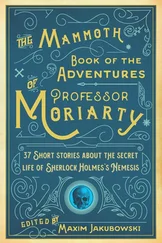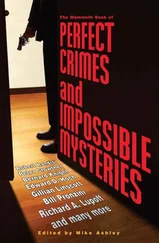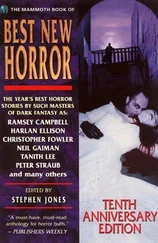Continuing his amble, Malcolm raised his swarthy visage to the moon and imagined his eyes were drinking in her cool luminosity. Although she appeared very bright, he knew that her surface was dark, and this added to his feeling of kinship with her. He felt as isolated as she appeared, far away from the common horde that crawled upon the earth.
Pursing lips, he began to whistle an obscure tune as he continued to Water Street and approached the antique house that was his destination. Stopping to study the structure, he contemplated the woman he had arranged to meet, the figure he was perhaps to paint. He knew little of her, for she was a creature of mystery and myth, incredibly old and never seen, except on rare occasions in deepest night. He recalled a line from Ovid of which he was fond: “Blemishes are hid by night and every fault forgiven; darkness makes any woman fair.”
Yet Edith Gnome was not any woman. No one knew how old she had been in 1925, when Richard Upton Pickman had painted her; and his canvases were certainly no indication, for in some she looked very young indeed, little more than a teenager, while in the most famous painting she had been depicted as a mature woman seated at a spinning wheel.
Miss Gnome had earned a slight reputation as a Bohemian poet in Boston, but Malcolm knew of her because of his obsession with the sinister painter and his work. Pickman was reputed to have completed thirteen canvases of the woman before his mysterious disappearance in 1926. Using his underground connections, Malcolm had obtained the smallest of these paintings — one of a series — in which Miss Gnome was shown as an adolescent surrounded by dog-faced ghouls who were instructing her in the art of feeding like themselves. Malcolm’s fixation on the mystery of the sitter resulted in his obtaining a copy of the very scarce volume of her poetry that had been published in a very limited edition. To his amazement, the person who sold him the book mentioned nonchalantly that Edith Gnome yet lived, incredibly aged, in Arkham.
“She is rumored to hate being photographed, you know, and yet my friend who visited her was allowed to take one snap of the poet at her wheel. I was one of the lucky few who were given copies, after vowing never to allow it to be reproduced. This is from last year.”
Malcolm reached out for the small photograph handed him, shocked at the image that had been captured; he had imagined the mysterious poet would have an ominous appearance in keeping with her legend, yet the woman in the picture looked like a simple peasant woman of European origin seated at a primitive spinning wheel. Her plain attire of long dark skirt and white blouse was of no particular era; the shawl covering her shoulders appeared to be embroidered silk. A lace bonnet covered the wisps of white hair that framed what at first seemed a nondescript countenance; and yet the longer Malcolm gazed at her elderly face, the more he seemed to sense something in its expression that excited him subtly. He had the strangest sensation that the eyes in the photograph were returning his scrutiny.
A cloud obscured the moonlight, and night darkened. Malcolm blinked memory away and approached the house, climbed the porch steps and tapped lightly on the six-panel door. His rapping was answered by a fey fellow of indeterminate age who resembled Aubrey Beardsley and held a taper. Softly, the fellow spoke Malcolm’s name, stepped aside and allowed him egress into the dark domain. They passed flickering candles held in bronze sconces fastened to yellow walls, moving silently through dancing shadows in a hallway leading to immense double doors that opened into a large room with walls of paneled oak. Malcolm saw no spinning wheel. It would have been out of place in the elegant room, just as Miss Gnome, who now appeared to be far more aristocrat than peasant, would have been equally out of place spinning. The petite creature sat on a cushioned chair of red fabric, attired in a long ebony gown and with a black and silver snood covering her pale hair. The sight of her withered face with its high forehead and jade eyes shocked her visitor, for he had never encountered anyone so incredibly aged. Yet, through the signs of age, the woman still possessed a frail loveliness, although it was a morbid beauty because her facial flesh was so thin one could easily discern the skull beneath her features. Smiling, she motioned to a chair, into which Malcolm lowered himself as the manservant exited the chamber.
“Welcome to my home, Mr. Elioth. Do take off your jacket and set your knapsack on the floor. My, how young you are!”
He returned her smile and said, “At twenty-seven I no longer feel so youthful.”
“And that is absurd, young man. When you have existed for more than a century, then you can speak of lost youth. You gaze at what Shakespeare called a ‘cormorant devouring Time’ and marvel that you have yet escaped time’s appetite. You peer into the dim past and see those moments that still exist as shimmering memory. And although youth is a far-off incident, particles of it exist within you still, especially when you dance.”
The woman shut her eyes and nodded, and delicate music filtered into the room. Turning to the sound, Malcolm saw that the manservant had surreptitiously re-entered the room and had lifted the lid of an ornate music box. Malcolm heard a rustling noise as the old woman rose out of the chair and began to move about him like some thing of dainty shadow. Her small soft hands reached out for his, and he took them into his own. She led him into what was, for him, an inept and clumsy dance. They moved as one for some few moments, until the music slowed and ceased.
The tall fellow looked down at the diminutive woman and sighed.
“I’m not graceful on my feet, I fear,” he told her, laughing. “I regret never having learned to dance properly, gracefully, as they do in the old movies. I watch those Fred Astaire and Gene Kelly films and it seems like watching the past dance before my eyes.”
They regained their seats and, for no conscious reason of which he was aware, Malcolm said, in more somber tones, “I often feel as if I were born in the wrong era . . . that I was not intended for this century. Wouldn’t it be wonderful, to be able to dance out of time, to step into a different era or an alternative existence if one wished?”
Miss Gnome’s eyes shimmered with queer luster. “Wonderful indeed.”
Malcolm leaned over, unzipped a pocket of his bulky backpack, and pulled out the rare edition of Edith Gnome’s verse, the sight of which moved her to moan a little. “Will you honor me with a signature?” She took hold of the booklet and hesitated a little as she turned over its leaves. She then accepted his proffered pen and scribbled an inscription on the title page.
“I feel a vague precaution before signing my name. It probably stems from my witch heritage. The signing of one’s name can be a potent — at times a parlous — thing.”
The young man nodded, a dark corkscrew of hair falling to his brow. “Yes, I’ve noticed the recurring sorcerous motif in your verses.”
Outlandishly, she cackled. “Yes, that is something Richard Pickman and I shared: Salem ancestry. He actually painted a certain gathering pertinent to our kind, which no one has ever seen, myself excepted. Would you care to?”
“It would give me intense pleasure,” was his enthusiastic reply. Malcolm could hardly believe his good fortune: he’d not dared hope for any discussion of her poetry, let alone the revelation of an unknown Pickman. Of course he had not expected to partner her in dance either.
“Follow me. I have a special hallway wherein I keep my collection.” Malcolm followed her out of the room and along a series of hallways, until they came to one that seemed especially wide and well lit compared to the duskiness of the rest of the house. His excitement became a palpable taste in his mouth as his eyes took in the series of framed works fastened to the hallway walls. He stopped before one large canvas and studied it in the dim light of the corridor. He knew the painting was entitled “Gallows Hill,” for he had read a description of it in some catalogue. A ring of baying ghouls raised their canine faces to a witch who hanged from a frayed length of rope that had been secured onto a primitive-looking post. The hanged woman, however, was not the hag Malcolm had expected to see depicted, but rather a young and lovely corpse modeled after a youthful Edith Gnome.
Читать дальше












